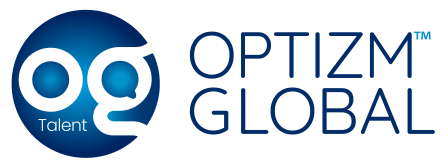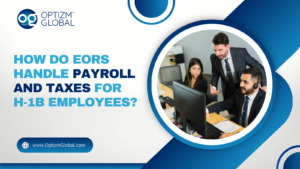Creating a positive candidate experience is crucial for attracting top talent and maintaining a strong employer brand. Candidate experience, though not officially defined, refers to applicants’ perceptions and reactions during recruitment, screening, hiring, and interviews. It is measured through candidate feedback, retention rates, and employee referrals. A bad candidate experience can result in missed opportunities to secure valuable employees and may lead to negative perceptions of your company.
Some common aspects of a negative candidate experience include:
Lack of Communication or Responsiveness: Candidates expect clear communication throughout the hiring process. A lack of updates or responsiveness from the employer can create frustration and uncertainty.
Complicated and Time-Consuming Application Process: An overly complex and time-consuming job application process can deter qualified candidates. Ensure that applying for a position is straightforward and user-friendly.
Device Compatibility Issues: Candidates may encounter difficulties if the job application process is not optimized for their preferred devices. Make sure the application process is accessible and mobile-friendly.
Unpleasant Interviews: Negative candidate experiences often involve interviews with unfriendly or disinterested employees. Friendly and respectful interactions during interviews are crucial for a positive overall impression.
Lack of Opportunity to Learn About the Company: Candidates appreciate the chance to ask questions and learn more about the company culture and values. Failing to provide this opportunity can leave candidates feeling uninformed and disengaged.
No Feedback Opportunities: A lack of feedback channels for candidates can hinder improvement and communication. Offering a platform for candidates to provide feedback on the hiring process is essential for ongoing improvement.
The consequences of a bad candidate experience range from missing out on top talent to potential turnover if there’s a disconnect between expectations set during the hiring process and the reality of the job.
How to augment the candidate experience during an interview? Here’s the brief method that every employer should follow:
9 Secrets of a Positive Candidate Experience
To enhance your candidate experience, consider the following :
Define Clear Hiring Needs: Conduct a skills gap analysis, collaborate with hiring managers, establish clear job titles, and write detailed job requirements. This ensures a focused hiring process, minimizing delays and miscommunication.
Simplify the Application Process: Make it easy for qualified candidates to apply. Ensure your careers site is easily accessible, provide clear instructions, offer LinkedIn easy applications, and make the entire process mobile-friendly.
Communicate Delays: Keep candidates informed about any delays in the hiring process. Even if substantial updates are unavailable, a simple email or call explaining the circumstances maintains transparency and a positive candidate experience.
Record Important Information: Keep detailed records in your Applicant Tracking System (ATS). Recording key details from phone calls or meetings helps avoid miscommunications, especially during critical stages like the offer process.
Incorporate Hiring Process Details in Job Descriptions: Alleviate candidate anxiety by including a brief outline of your hiring process in job descriptions. While avoiding excessive details to prevent over-rehearsing, provide candidates with a basic understanding of the steps involved, enhancing transparency and managing expectations.
Share Interviewers’ LinkedIn Profiles in Advance: Enhance the candidate experience by proactively sharing the LinkedIn profiles of interviewers in the interview invitation. This not only allows candidates to prepare adequately but also fosters a sense of familiarity with the interviewers and encourages mutual LinkedIn profile exploration.
Communicate Expectations After Each Stage: Improve the hiring process by clearly outlining what candidates can expect after each stage. Providing transparent expectations ensures candidates are informed about the next steps, reducing uncertainty and allowing for smoother progression through the recruitment process.
Maintain Communication Post-Offer Acceptance: Avoid post-acceptance radio silence to uphold a positive candidate experience. Recognize that the period between offer acceptance and onboarding is crucial. Keep candidates engaged and informed, offering updates on any changes or information they may need before their first day. This ongoing communication reinforces a welcoming atmosphere and demonstrates continued excitement about the candidate joining the team.
Embrace Openness in Feedback Exchange: Some companies refrain from providing feedback to rejected candidates due to legal concerns. However, these fears can be addressed by structuring feedback carefully.
– As candidates progress further in the hiring process, there is an increased expectation for specific and personalized feedback. Offering constructive insights can aid candidates in approaching their job search more strategically and help them determine their interest in exploring additional opportunities with your company.
– Simultaneously, encourage candidates to share feedback with you. Implementing a candidate experience survey allows you to pose relevant questions and gather insights that can contribute to enhancing the overall candidate experience. This reciprocal feedback exchange fosters transparency and continuous improvement in the hiring process.
Key Points to Consider
Optimize Application Process: Keep applications short and mobile-friendly, respecting candidates’ time and making it easy to apply on various devices.
Flexible File Uploads: Avoid restricting file uploads to small sizes; be generous to accommodate high-quality resumes and portfolios, creating a positive candidate experience.
Allow Free-Response Answers and URLs: Offer free-response fields and URL options for candidates to share work samples or additional details, enhancing flexibility in the application process.
Selective Use of ‘Required’ Fields: Mark answers as ‘required’ only when necessary, saving candidates’ time and streamlining the application review process.
Avoid Mandatory Salary History: Eliminate mandatory salary history requests to respect candidates’ negotiation strategies and legal considerations, contributing to fair and transparent hiring practices.
Personalized Communication: Use names instead of candidate reference numbers in communication, fostering a personal touch and avoiding confusion.
Human Email Addresses: Communicate with candidates using human email addresses to convey genuine interest and avoid impersonal interactions.
Provide Interview Details: Inform candidates about the number of interviewers, interview format, expected duration, and dress code, enhancing transparency and preparation.
Office Logistics: Share information on entering the office building, parking options, and any other logistics, ensuring a smooth and stress-free interview experience.
Give Full Attention in Interviews: Prepare for interviews by reviewing profiles, booking meeting rooms, and creating relevant questions. During interviews, maintain eye contact, avoid multitasking, and express gratitude for candidates’ time.
Post-Interview Considerations: Thank candidates, avoid scheduling immediate commitments post-interview, and provide time for questions to create a positive post-interview experience.
Conclusion
Startups can avail external services to enhance the hiring process and enhance the candidate experience. Optizm Global offers world-class experience in this regard. Why ?
They engage in collaborative efforts with clients to create exceptional recruiting and hiring processes, aiming to attract top-tier talent. Their Recruitment Process extends beyond conventional recruiting services, addressing internal recruitment needs to provide talent aligning with skill sets and culture. The approach focuses on efficiency, aiming to streamline processes and drive cost savings.





